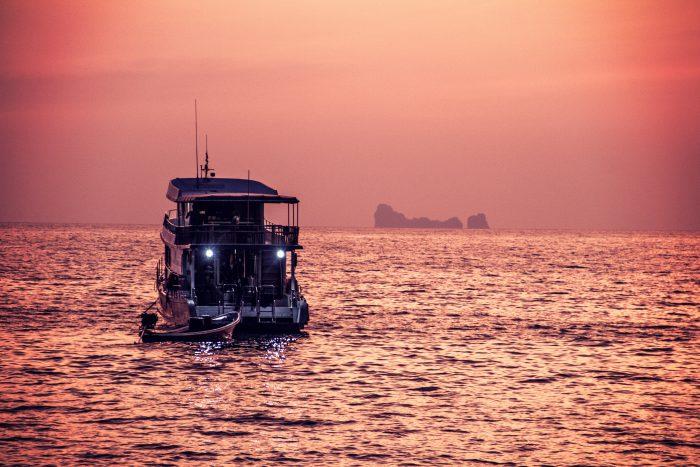
Late last year, Indian Prime Minister Narendra Modi made his first visit to the Andaman and Nicobar Islands. The union territory, far from the Indian mainland and often forgotten in its history, is the location of the Andaman and Nicobar Command (ANC), India’s first and so far its only tri-service command. Modi’s visit highlighted steady security developments in and around the Andaman Sea, reflecting the revival of those waters’ strategic value.
For much of India’s post-independence history, the remote waters of the Andaman Sea remained undisturbed. Now, however, maritime competition in the Indo-Pacific is reversing that status. China and India are jostling for influence in the Indian Ocean. The US, Japan, Australia and ASEAN are in the mix, too.
Subzones such as the Bay of Bengal and the Andaman Sea are important theatres of action. Flanked by littorals to its north and east and the Malacca Strait to the southeast, the Andaman Sea contains strategically indispensable sea lines of communication critical for energy and trade. It’s indubitably a keystone for maritime influence and security in the Indo-Pacific. Consequently, it’s lately become a focus for security developments.
In securing the Andaman Sea, Delhi’s attention has naturally focused on enhancing the capacities of the ANC. Since taking office, the Modi administration has shown a pronounced intent in this regard. In late January, the Indian Navy commissioned its third naval base, INS Kohasa, on North Andaman Island, after a slew of earlier developments there. Last year, the navy established a ‘joint logistics node’ at the ANC to organise tri-service activities, procurement and movement. It also inaugurated a second floating dock at Port Blair to assist in ship repairs for different classes of ships.
In 2017, the navy upgraded the Baaz naval station at Campbell Bay with an extended runway and operating bases. In November 2017, the ANC conducted the five-day ‘Defence of Andaman and Nicobar’ exercise. The operation, involving multiple forces and resources, sought to test the defence response of the ANC through cross-service simulations and drills. The government also gave environmental clearance for a long-range-missile testing facility to be set up at Rutland Island, close to South Andaman Island, in 2018.
However, India doesn’t intend to go it alone. Modi’s first visit to Jakarta in May last year yielded a bilateral ‘Shared Vision for Maritime Cooperation in the Indo-Pacific’. The comprehensive document earmarks Andaman and Nicobar for enhanced connectivity with Indonesia’s Sumatra Island and the port of Sabang in particular. Shortly after Modi’s visit, INS Sumitra, an Indian Navy ship, made a port call at Sabang. More recently, an Indian Coast Guard vessel, INS Vijit, visited Sabang as well. A pending Indo-Japanese acquisition and cross-servicing agreement is also expected to include provisions for the ANC to host Japanese warships.
India is also continuing existing maritime exercises in the zone and looking to develop new ones. The ANC currently carries out the multilateral MILAN exercise in the region, along with annual bilateral ‘coordinated patrols’ in the sea with Thailand, Myanmar and Indonesia. The Singapore–India Maritime Bilateral Exercise (SIMBEX) takes place there as well. The silver jubilee of SIMBEX last year involved the largest participation yet from both sides, including ‘multidimensional drills’ involving several types of ships and aircraft and live weapons firing.
A new trilateral exercise in the Andaman Sea, involving India, Singapore and Thailand, is set to begin in 2019.
India isn’t the only major power paying attention to the Andaman Sea. The presence of the sea lines of communication has long engendered Beijing’s strategic interest in the region. Chinese activities in the zone are notable. There are reports of submarines of the People’s Liberation Army Navy being seen near the Andaman and Nicobar Islands.
Concurrently, Beijing has invested in strategic infrastructure projects in littoral states to project influence. One such undertaking is the Kra Canal, which is a means of bypassing the Malacca Strait by a waterway between the South China and Andaman seas. In 2018, Thailand began feasibility studies for the canal, and Chinese investors have reportedly committed US$30 billion towards the project. Under a bilateral agreement signed in 2017, Thailand is also procuring submarines from China to ‘protect [its] natural resources in the Andaman Sea’.
Further north, China is assisting Myanmar in developing Kyaukpyu port. The two sides concluded an agreement to develop the port in November 2018, and China is committing over a billion dollars in investment. Although the objective of these developments is ostensibly to promote trade and commerce, their implications for security in the Andaman Sea are hardly obscure.
The Andaman Sea’s rising profile is also important for countries outside the littoral basin. Australia is a case in point, having thrown its weight behind the Indo-Pacific strategic concept. Experts have already stated that Australia’s Indo-Pacific efforts should be focused in the Bay of Bengal, and Canberra has participated in Indian-led maritime ventures such as MILAN and, from time to time, the Malabar exercises.
Given the increasing strategic value of the Andaman Sea, Australia could look to include it as an area for cooperation under existing mechanisms such as the multilateral Indo-Pacific Endeavour and bilateral AUSINDEX maritime exercises.